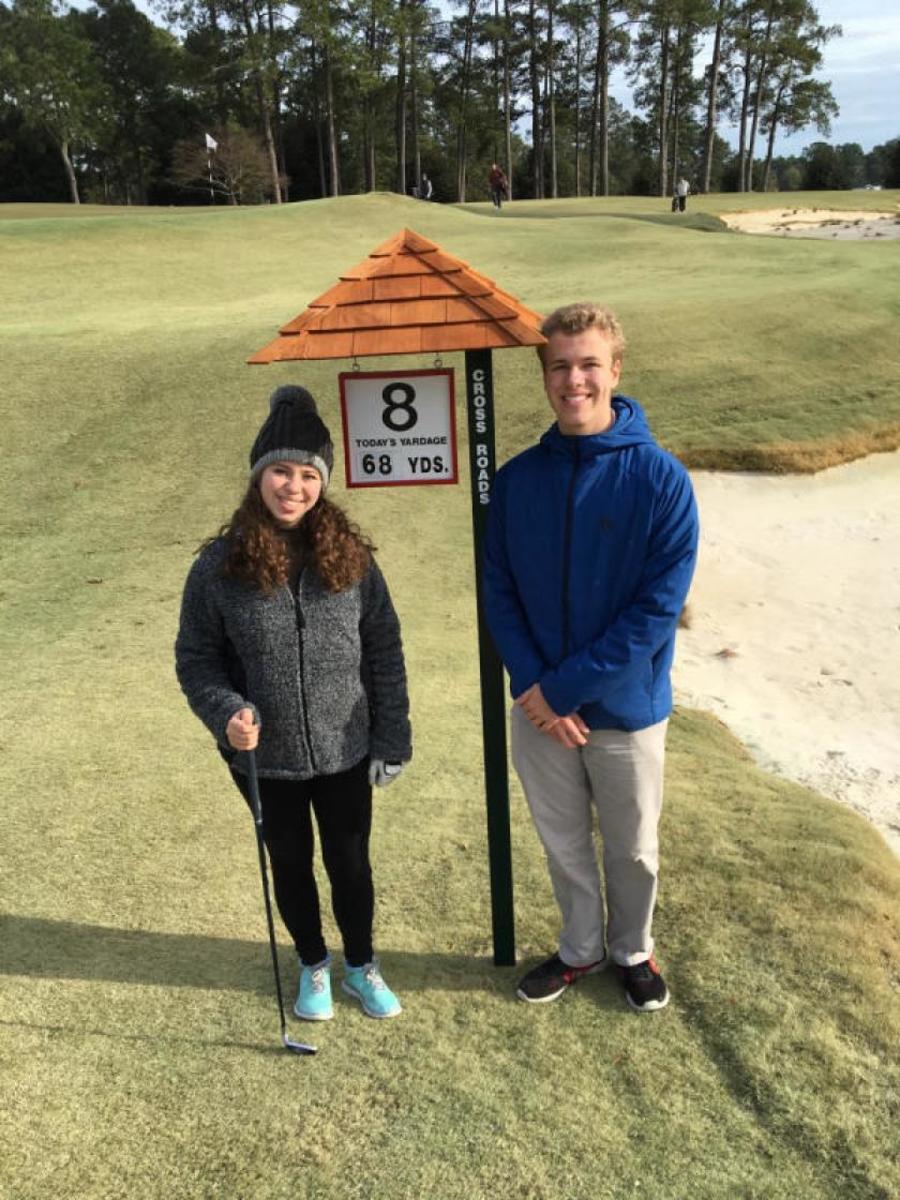Modern golf lights alternative paths into game

I can attest to golf’s warming trend for all that recently has been labeled alternative, be it Topgolf, simulators or old-turned-new par-3 courses.
During Christmas break in North Carolina, our family broke cabin fever by visiting The Cradle par-3 course at Pinehurst Resort. My daughter Monica, a college sophomore, and son Will, a high school senior, were intrigued because of a recent re-introduction to golf. Both played some golf in their pre-teen years, but like many in their age group were taken away by school commitments, music, dance, team sports and a quicker pace for their daily activities.
Last summer they were introduced to Topgolf’s new location in our hometown, Jacksonville, Fla. Wooed by the music, video boards, Skee-Ball style targets, encouragement to whack golf balls as hard as possible without consequence and ability to wear the casual clothing of their choice, they felt inclusion. “It is a relaxed environment, and you don’t have to be good at golf,” Monica said. “You don’t need any skill to feel like you have skill,” Will said.

PHOTO BY WARD CLAYTON
Siblings Monica and Will Clayton rediscover golf at The Cradle par-3 course at Pinehurst (N.C.) Resort.
That led to their asking me to tee it up with them, which is a good thing because I also had drifted away from playing even though I work in the golf industry. Not enough time. A rusty game leads to frustration. Too expensive.
The Cradle at Pinehurst is – in current vernacular – lit. Opened Sept. 30, it’s located on the doorstep of the Pinehurst clubhouse where the start of the Nos. 3 and 5 courses used to be and where Pinehurst’s first nine holes were built in the late 1890s. The Gil Hanse-designed short course has no hole longer than 127 yards. A railroad track runs beside the course, parallel to Highway 5, and the Aberdeen, Carolina & Western chugged by midround. The cost to play is a bit steep at $50, but replays are free and children 17 and younger play for free with a paying adult.
In the first three months, more than 8,000 rounds were played, including replays. There have been an estimated 21 aces, made by those ranging from ages 8 to 84.
Another attraction is the adjacent 75,000-square-foot, 18-hole putting course called Thistle Dhu, also recently reinvigorated, enlarged by four times and scooted closer to the clubhouse.
At Topgolf and The Cradle, the attendees included old, young, men, women, infrequent golfers – all smiling. Both were cool places.
The visits brought me back to my golf roots in Durham, N.C. There were two par-3 courses, both lighted, in the Bull City when I was growing up. Mike Rubish’s Golf City had a driving range, a par-3 course and a putt-putt course. Westwood Golf Course was purely a par-3 course, with a small, cinderblock clubhouse that sold cold beer to an army of gamblers who might occasionally hit shots toward an adjacent Waffle House sign located near Westwood’s ninth tee. The courses succumbed to a mall and a highway by the late 1970s and early ’80s but could claim getting clubs into many non-golfers’ hands. Par-3 courses are now springing back to life at various high-end facilities across the country.
“The Topgolf experience is so exciting because it’s brought golf to millions of people across the world by ‘gameifying’ the golf experience,” said Tom Pashley, Pinehurst Resort’s president. “It has created a lot of first-time golfers, but I think it’s a bit of a stretch to say those people will go to an 18-hole golf course. But coming to a par-3 course like The Cradle could fill that space between. We’re just scratching the surface of the possibilities.”
During the PGA Merchandise Show in late January in Orlando, Fla., much of the buzz was once again about avenues to gain the attention of newer, younger golfers through technology, metrics, social-media engagement and abbreviated options into the game, such as what the European Tour is rolling out. There was even one PGA of America education session entitled, “How Ping Pong Can Affect Your Ball Striking.” Almost overnight, more golf-industry professionals are embracing these “alternative” inroads.
One recent statistic that was particularly telling came from the National Golf Foundation. The NGF’s 2017 Golf Industry Overview indicated there was an 11 percent increase in off-course participation for 2016 “from the popular facilities like Topgolf and Flying Tee to the indoor simulators found in facilities like PGA Tour Superstore and Golfzon. Of the estimated 20 million off-course participants in 2016, more than 40 percent didn’t play on an actual golf course. … Research shows that those people who hit golf balls with a club at off-course locations – whether Topgolf or a standard driving range – are more likely to play golf on an actual course at some point.”
In effect, the successful trend may simply fall on an old-school method of golf combined with new technology as a way to have non-intimidating fun with a golf club in your hands.
Ward Clayton has been involved with golf communications for 30-plus years, including stints with the Augusta Chronicle and PGA Tour and currently with Signature Group and Clayton Communications. He lives in St. Johns, Fla. Email: jaxclayton123@gmail.com; Twitter: @wardclayton.
